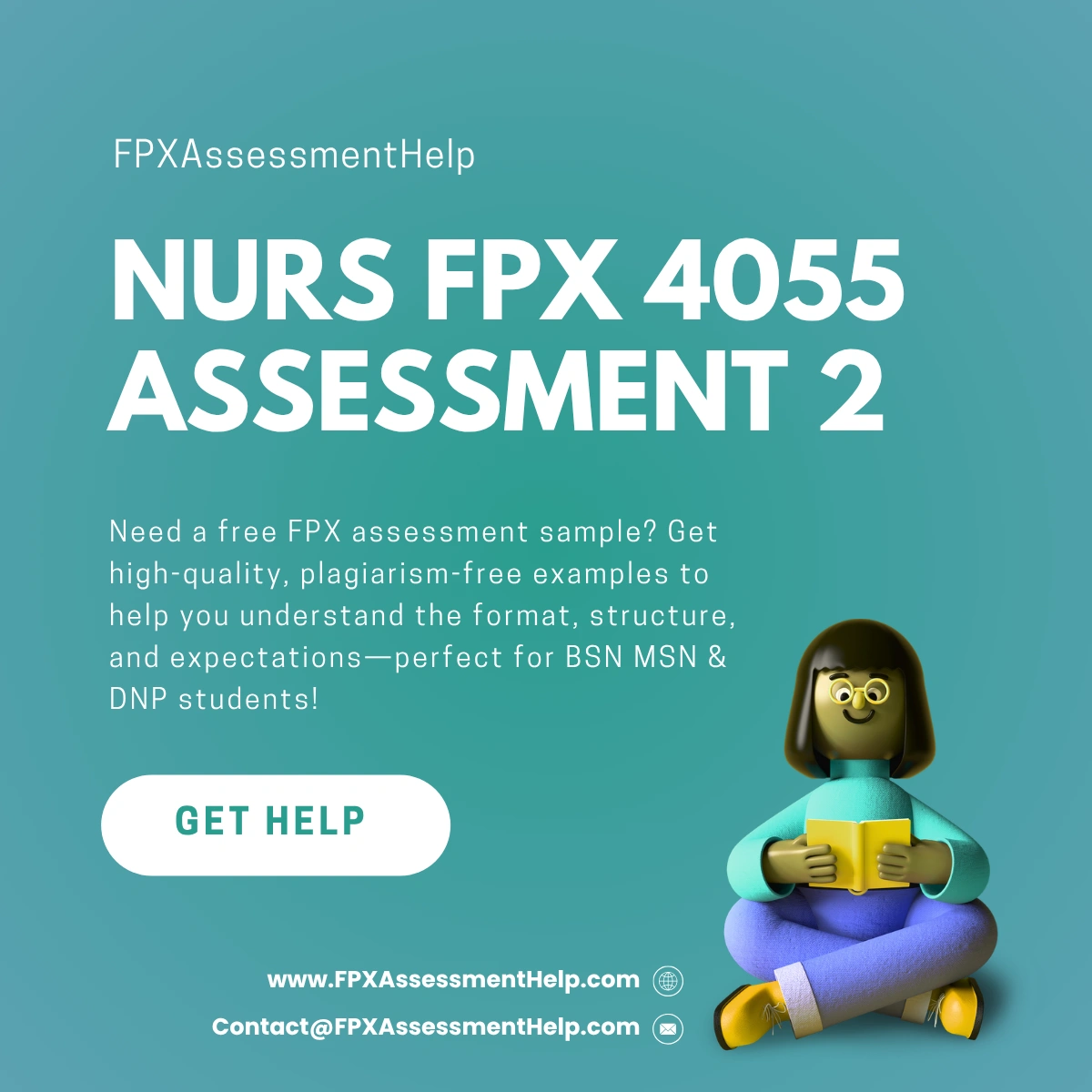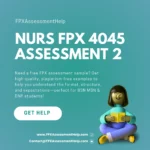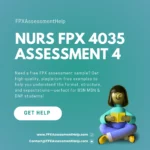NURS FPX 4055 Assessment 2 Community Resources
Student Name
Capella University
NURS-FPX4055 Optimizing Population Health through Community Practice
Prof. Name
Date
Community Resources
In coastal Florida, community well-being and disaster preparedness rely heavily on support from local agencies and national organizations, such as the Federal Emergency Management Agency (FEMA). Originally established under President Jimmy Carter in 1979, FEMA later became part of the U.S. Department of Homeland Security in 2003 (FEMA, 2021a). While most widely recognized for national disaster relief efforts, FEMA plays an especially vital role in regions like Florida that are vulnerable to frequent hurricanes and flooding. The agency coordinates with local governments and nonprofits to implement preparedness measures, respond during emergencies, and aid in recovery. This includes deploying emergency teams, facilitating evacuations, and providing displaced residents with immediate financial, housing, and logistical support. FEMA’s involvement in disasters like Hurricane Ian in 2022 showcases how it works on the ground to protect lives and rebuild affected communities (FEMA, 2023).
FEMA operates with more than 20,000 personnel nationwide, contributing to the coordination and support of various emergencies, including natural disasters like wildfires, earthquakes, and floods. Its overarching goal is to minimize risk, save lives, and ensure swift recovery for impacted populations. For instance, after Hurricane Ian, FEMA not only provided shelter and supplies but also collaborated with other agencies to repair roads and restore critical infrastructure. These comprehensive interventions illustrate FEMA’s mission in practice: to reduce harm and support resilient recovery (FEMA, 2023).
Provision of Equal Opportunity and Improved Quality of Life
FEMA recognizes that communities do not experience disasters equally. In coastal Florida, social, cultural, economic, and physical barriers impact how individuals access disaster support. These include poverty, lack of healthcare, unstable housing, and limited transportation. Such challenges may prevent timely evacuation or hinder access to shelters and recovery resources. While FEMA is mandated to serve all communities, these barriers have historically limited the reach of its services to marginalized populations (FEMA, 2022).
To address these disparities, FEMA introduced its Equity Action Plan, which forms part of a broader federal initiative to promote fairness in disaster response. The plan emphasizes inclusivity, equitable resource distribution, and local engagement. Key components of FEMA’s efforts are outlined in the table below:
| Barrier | FEMA Strategy | Outcome/Challenge |
|---|---|---|
| Language and cultural gaps | Use of multilingual registration centers | Improved communication but delays in outreach persist |
| Geographic isolation | Mobile assistance units | Enhanced access, though hampered by logistical constraints |
| Economic hardship | Targeted financial aid programs | Relief provided but bureaucratic delays hinder timely access |
| Healthcare limitations | Collaboration with public health agencies | Increased care capacity, yet strained systems in hard-hit zones |
FEMA’s efforts during recent disasters included mobile units and materials in multiple languages to reach communities that typically face exclusion (Davis et al., 2021). Despite these improvements, issues like insufficient infrastructure and distrust in federal agencies continue to impact FEMA’s effectiveness in marginalized areas.
Impact of Funding Sources, Policy, and Legislation
FEMA’s capacity to deliver timely and effective disaster response in coastal Florida is shaped by its funding, policies, and governing laws. Its budget, allocated by the Congressional Budget Office (CBO), directly influences the scale and scope of emergency aid. Programs like the Hazard Mitigation Grant Program (HMGP) and Public Assistance Grant Program (PAG) rely on this funding to assist communities in rebuilding essential infrastructure after disasters (Congressional Budget Office, 2022). Delays or reductions in funding can impede FEMA’s response times, affecting recovery efforts for entire regions.
In addition to funding, FEMA adheres to several policy frameworks. One such policy is the State, Local, and Tribal Mitigation Planning Policy, which requires local governments to conduct hazard assessments and propose risk reduction strategies. These plans help develop evacuation routes, reinforce homes, and manage flood zones—initiatives particularly crucial for coastal Floridians (Augusto, 2023).
FEMA’s authority is rooted in several key legislative acts, including the Robert T. Stafford Disaster Relief and Emergency Assistance Act, the Homeland Security Act, and the National Flood Insurance Act. These laws are consolidated in 44 CFR Part 201 of the Code of Federal Regulations, guiding FEMA’s disaster response protocols (Stovall, 2021). However, accessing support under these frameworks may still pose difficulties for low-income or non-English-speaking individuals, emphasizing the ongoing need for procedural simplification.
Public health is a central aspect of FEMA’s collaborative approach. Partnering with the U.S. Department of Health and Human Services (HHS), FEMA supports the Health and Social Services Recovery Support Function (HSSRSF), which plays a key role in post-disaster health infrastructure and recovery. During Hurricane Irma, for example, this collaboration ensured public safety by inspecting food, managing medications, and keeping medical responders operational (FEMA, 2021b).
Nurses are essential to FEMA’s response model, providing on-site triage, mental health care, and long-term recovery services. Disasters often lead to emotional trauma, and nurses help establish temporary recovery shelters where they offer both physical and psychological care, fostering community resilience (Flaubert et al., 2021).
Conclusion
In summary, FEMA remains a cornerstone in protecting and rebuilding communities in coastal Florida following disasters. Through collaboration, legislation, and targeted resource allocation, FEMA enhances health and safety outcomes, even in vulnerable or marginalized areas. While funding constraints and structural barriers still exist, its proactive efforts—such as equity-driven policies, public health collaborations, and mitigation planning—demonstrate its commitment to inclusive and resilient recovery. Moving forward, ongoing attention to accessibility and community-specific strategies will be crucial in ensuring that no one is left behind during crises.
References
Augusto, C. (2023). Flooded with possibilities: Analyzing flood insurance as a catalyst for development in Southeast Florida. Mit.edu. https://hdl.handle.net/1721.1/153049
Congressional Budget Office. (2022, November). FEMA’s disaster relief fund: Budgetary history and projections | Congressional Budget Office. https://www.cbo.gov/publication/58420
Davis, C., Berke, P., Holloman, E., Griffard, M., Haynes, S., Johnson, E., Warraich, Z., Crisostomo-Morales, L., Golda, D., Benissan, G., Gillespy, C., Butterfield, W., & Rakes, E. (2021). Support strategies for socially marginalized neighborhoods likely impacted by natural hazards coastal resilience center. https://naturalhazardsresiliencecenter.org/wp-content/uploads/2022/04/Support-Strategies-for-Socially-Marginalized-Neighborhoods-1.pdf
FEMA. (2021a, January). History of FEMA. https://www.fema.gov/about/history#:~:text=Creation%20of%20FEMA
FEMA. (2021b, March 18). Health and social services recovery support function. https://www.fema.gov/press-release/20210318/health-and-social-services-recovery-support-function
FEMA. (2022, October). Equity. https://www.fema.gov/emergency-managers/national-preparedness/equity
NURS FPX 4055 Assessment 2 Community Resources
FEMA. (2023, March 8). Hurricane Ian – response and recovery | fema.gov. https://www.fema.gov/fact-sheet/hurricane-ian-response-and-recovery
Flaubert, J. L., Menestrel, S. L., Williams, D. R., & Wakefield, M. K. (2021). Nurses in disaster preparedness and public health emergency response. National Academies Press (US). https://www.ncbi.nlm.nih.gov/books/NBK573904/
Stovall, S. (2021). Emergency management laws and mandates: What drives emergency management planning and policy (pp. 91–105). https://doi.org/10.4324/9781315118345-6





